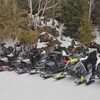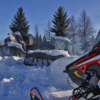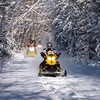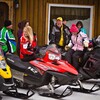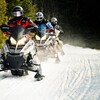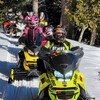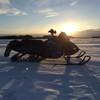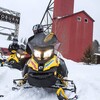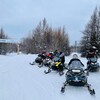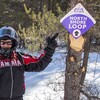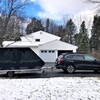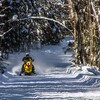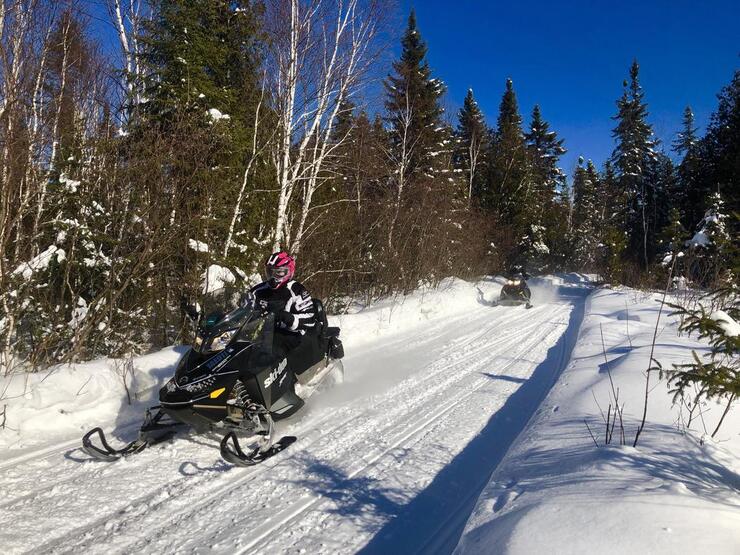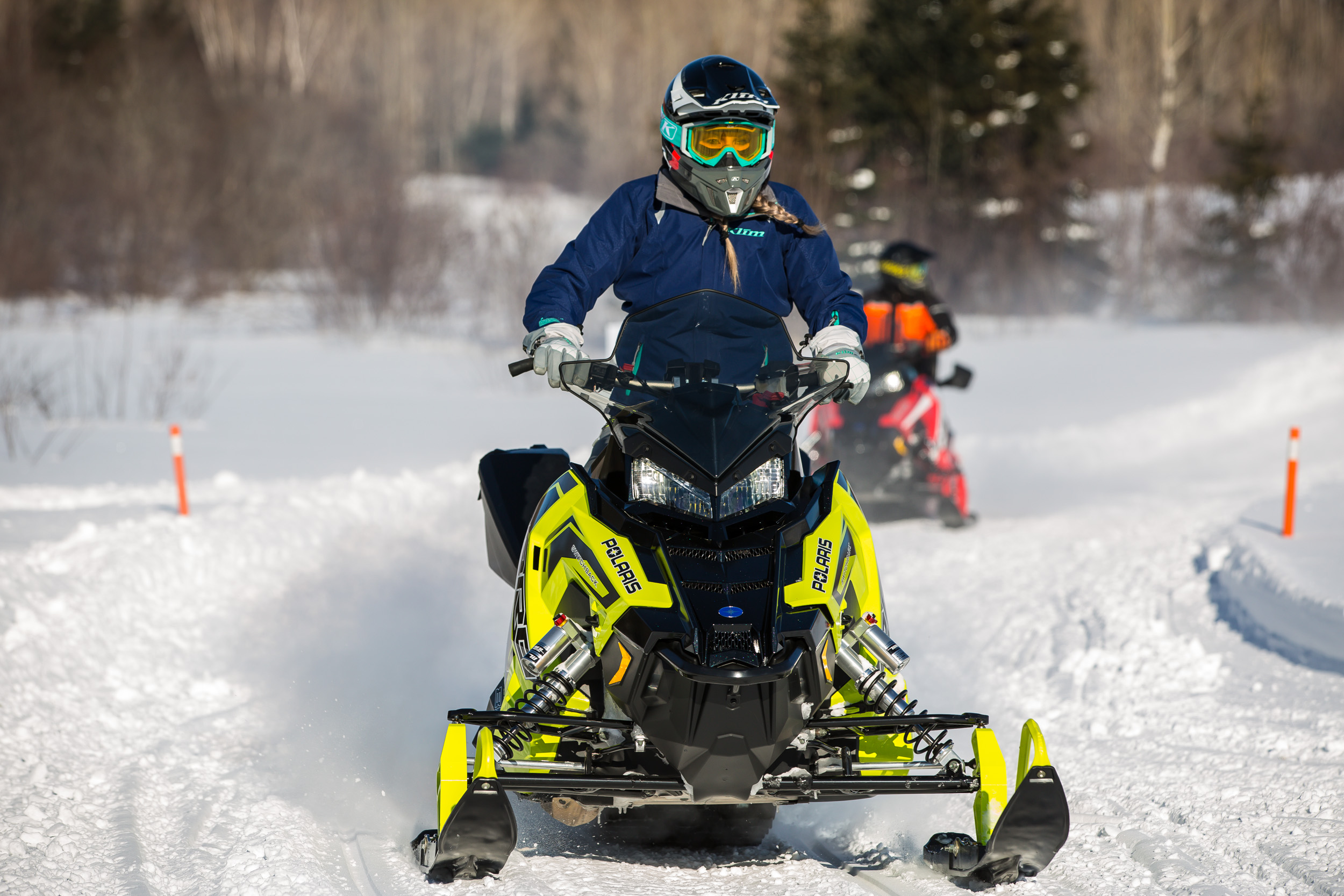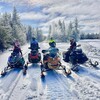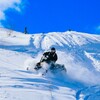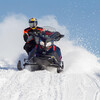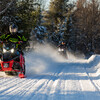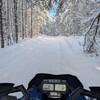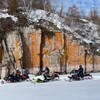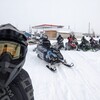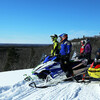
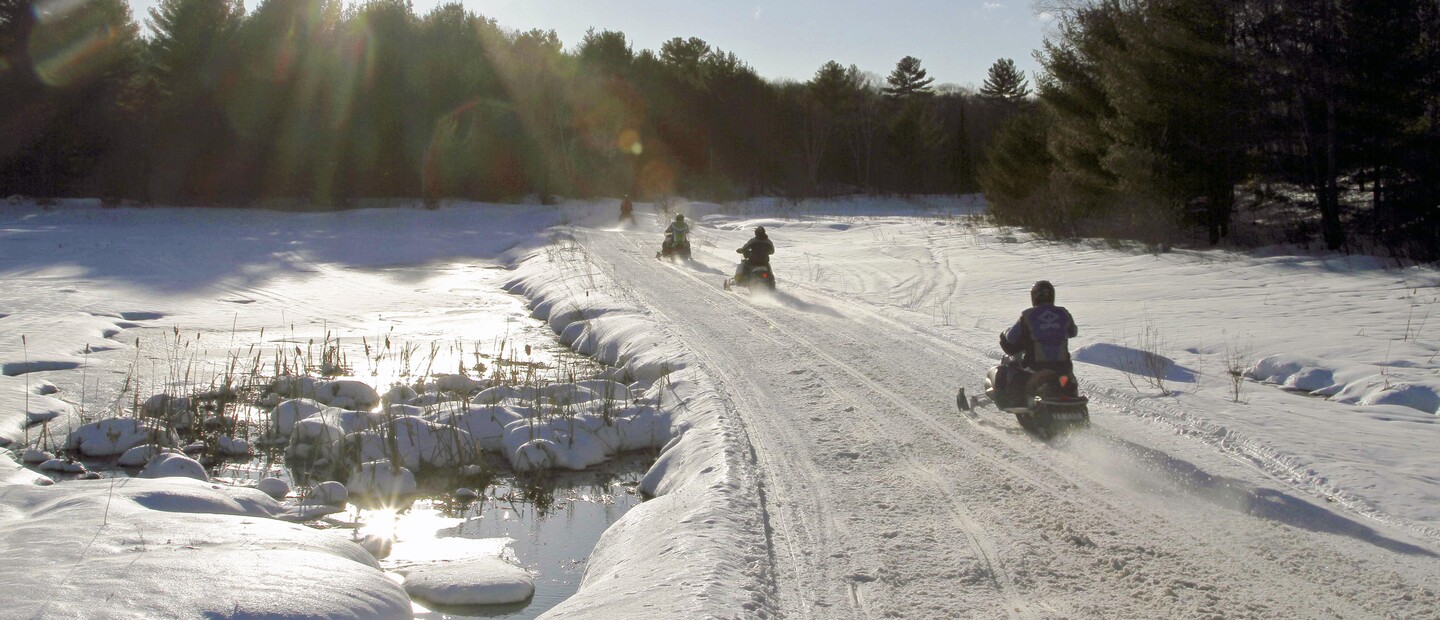
How to Snowmobile Safely: A Guide for Riders
It’s snowmobile season! You’re probably ready to suit up and start exploring. But before heading out, you’d better be sure you’re familiar with the safety precautions required. Every year, serious accidents are reported out on the trails, and too often, these accidents could have been prevented. Riders who are unfamiliar with their machine, the terrain, or many other aspects of responsible snowmobile use can put themselves and others in danger.
And who better to offer insights on keeping safe than some expert snowmobilers? We reached out to a few folks who have been hitting the trails all over Ontario for years. They weighed in with ways to keep safe on the trail, as well as best practices for preventing accidents and avoiding dangerous conditions.
Take a Training Course
The best way to ensure you’re fully prepared for a safe snowmobile outing is to take a training course. If you are between 12 and 15 years of age, or if you are 16 and older and do not have a valid Ontario driver’s licence, you must successfully pass a snowmobile driver-training course to get your operator’s licence. A snowmobile driver-training course can also be a valuable refresher for licensed and experienced snowmobilers. And to make it as easy as possible to ride safely, you can complete the course online.
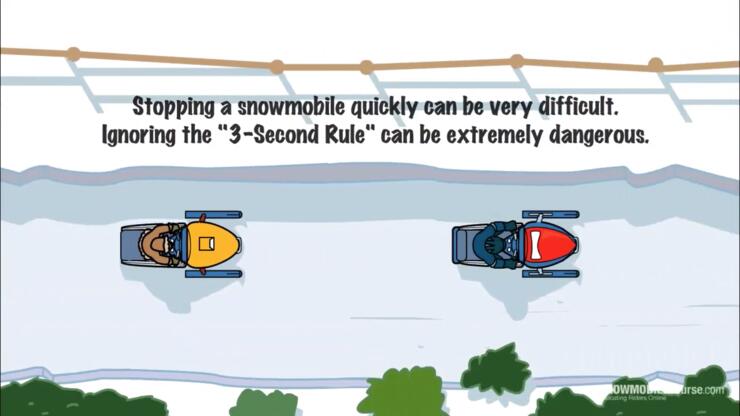
Many of the Ontario Federation of Snowmobile Clubs clubs hold training courses each season, at times that can accommodate any schedule. Find one near you on the OFSC’s events page. You can also take a training course through any of these:
Pack Smart
A safe snowmobile outing begins before you leave the house. Making sure you’ve got the right things—and enough of them—is essential.
“Always pack an extra pair of socks, two plastic bags, and gloves,” says Shelby Mahon, a former pro racer also known as the Motorhead Maiden who founded motorsports photography and marketing company Motorsports Media. “If you have a little extra room, pack a sweater and warm pants. A ride can go from fun to miserable with only a small shift in body temperature.”
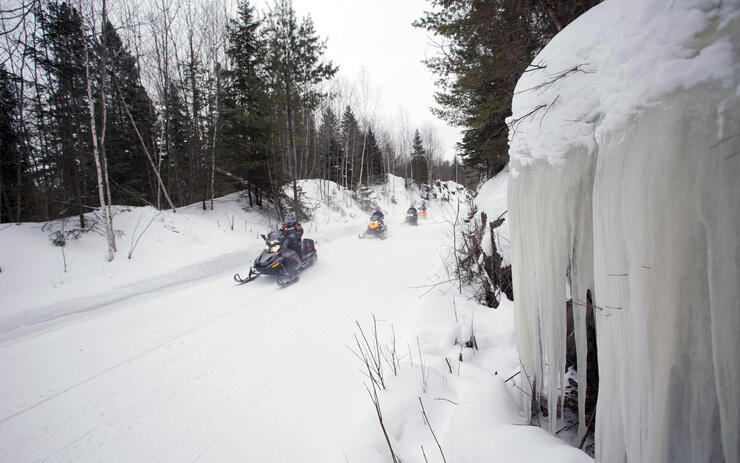
Katie Erb, a longtime rider who writes for Northern Ontario Travel and is an account manager for Erb Transport for Northern Ontario, has her own list of must-have supplies: “I always have a flashlight, repair tools, saw, rope, first aid kit, extra goggles, extra gloves, extra layers, food and water, etc. These are some of the bare necessities.”
Keep Your Ears Open
But one item you might want to consider leaving at home are your headphones.
“Don't ride with headphones on,” says Mahon. “Far too many riders are listening to music instead of listening to what's going on around them. It's easy to get distracted when you’re rocking out to music, and that can be dangerous.”
Follow Mahon’s travels around North America by visiting Motorhead Maiden’s Instagram or Facebook.
Ride at Your Skill Level
“Don't ride more than your ability,” says Luc "The Groomer Guy" Levesque, an avid snowmobiler and groomer operator from Dubreuilville, Ontario who hosts The Groomer Guy Podcast. “If you don't feel safe going at the same speed as the snowmobile in front of you, ease off and let them go at their pace. You will catch up to them down the trail,” he adds. “Snowmobiles kick up snow dust and it can make your visibility bad—you could get a surprise and a sharp corner suddenly appears, and you will end up going off trail and maybe even crash.”
Watch Out for Groomers
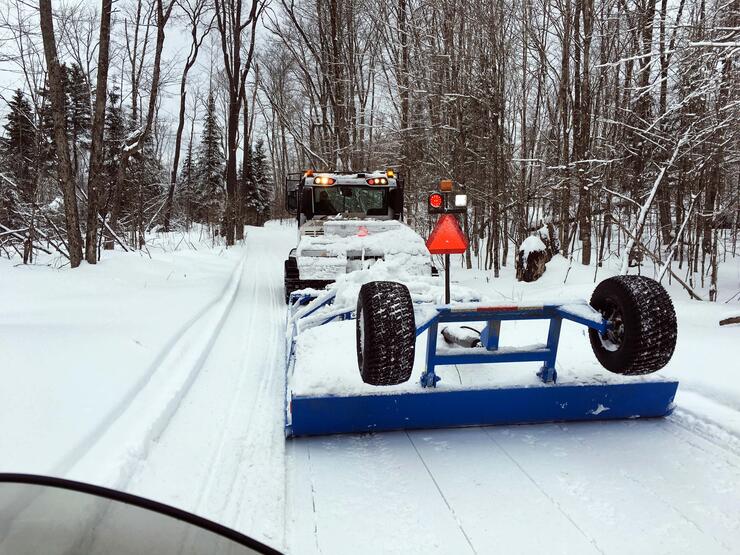
Levesque adds that riders should also keep in mind that trail groomers like himself operate around the clock in some areas, so you never know if one might be around the corner, creating the potential for a collision if a rider is not cautious.
“At night, keep an eye out for the groomer headlights and during the day, keep to your side of the trail and keep in mind that a groomer can be just around the corner,” he suggests. “If a trail is rough, there's a good chance a groomer is coming down the trail and working on it.”
Keep Your Vision Clear
The biggest dangers can come from those riders closest to you—the friends or fellow riders in your group. And if you don’t keep a safe distance from them and ensure your vision is clear, it doesn’t take much for conditions to get dangerous fast.
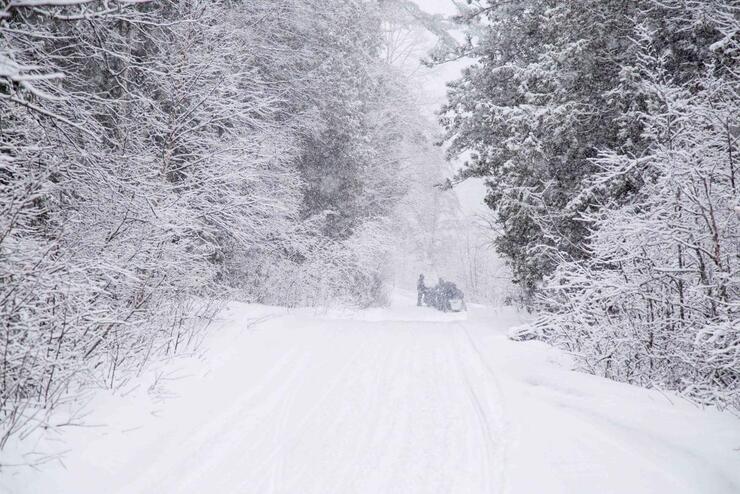
“One time, I was riding fast and sleds in front of me were kicking up lots of snow dust,” Levesque describes. “My vision was very bad and I should have backed off the throttle, but I didn’t—suddenly the snow dust cloud cleared, one of the snowmobiles in our group blew his engine, and he came to a dead stop. I had just enough time to react and move to my left. I clipped the sleigh he was pulling and brushed handlebars to handlebars, breaking the brake lever on his sled and ripping and destroying my right hand glove wide open. Lucky for me, nobody got hurt. It was a close one with only a small amount of damage. Now I stay back out of the snow dust and I try to keep a clear sight in front of me.”
See more from Levesque and some of his latest updates on Instagram, Facebook, and YouTube.
Read the Weather Conditions
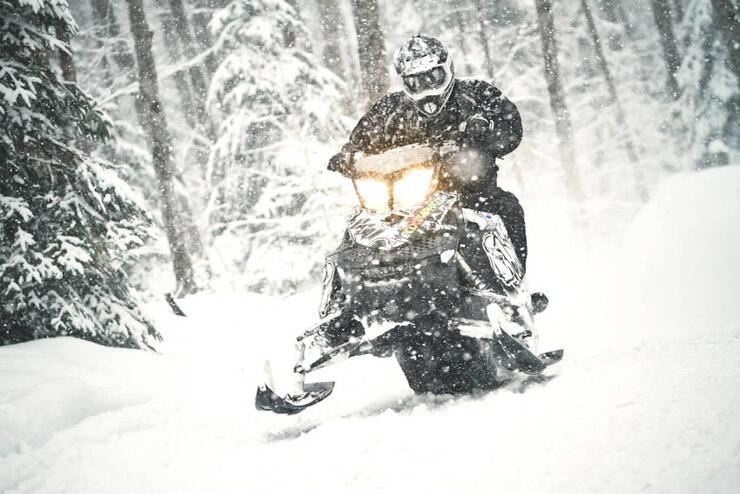
Of course, one of the biggest factors when it comes to visibility is not just the snow kicked up by groomers or people you’re travelling with, but the weather conditions themselves. Mahon describes an experience when she was younger and riding with a big group of family friends to dinner in the evening.
“With a big snowstorm blowing, in it was difficult to know where we were or where we were going as we were not in a familiar area,” she says. “It scared me to the point that to this day, I always pay extra close attention when night riding or when bad weather is coming in.”
Know Before You Go
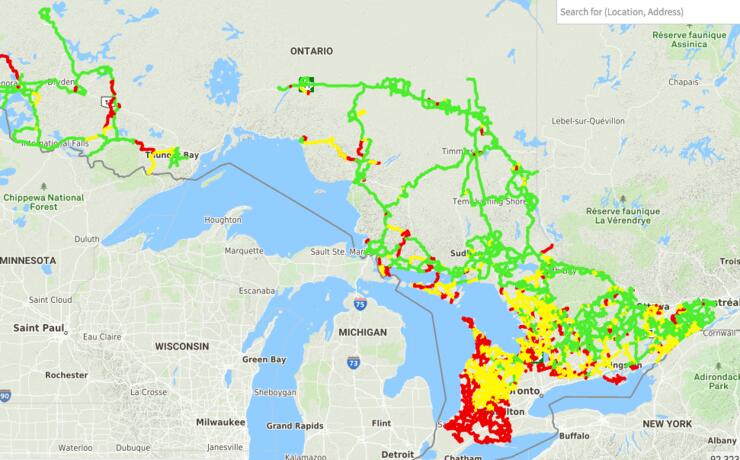
You should know the lay of the land before setting out anywhere. If the trails are unfamiliar, you should review the OFSC Interactive Trail Guide or updated maps and the latest info about weather conditions and visibility.
“If you’re unfamiliar with the area that you’re riding in, be extra cautious,” recommends Ryan Hawkins of Canuck Powersports, an avid distance rider who carves up roads and trails throughout the year. He hosts the annual Great Northern Expedition charity every March.
He adds that anyone heading to an unfamiliar trail should “call the local OFSC club and refer to the online trail guide.”
Follow Canuck Powersports on Instagram and Facebook.
Be Extra Careful About Crossing Ice
One of the riskiest snowmobiling practices is sledding over ice and unknown bodies of water.
“No ice is safe ice,” says Hawkins. “How many times a year do we hear of people getting hurt or dying by going through the ice? This is 100% preventable but continues to happen every season.”
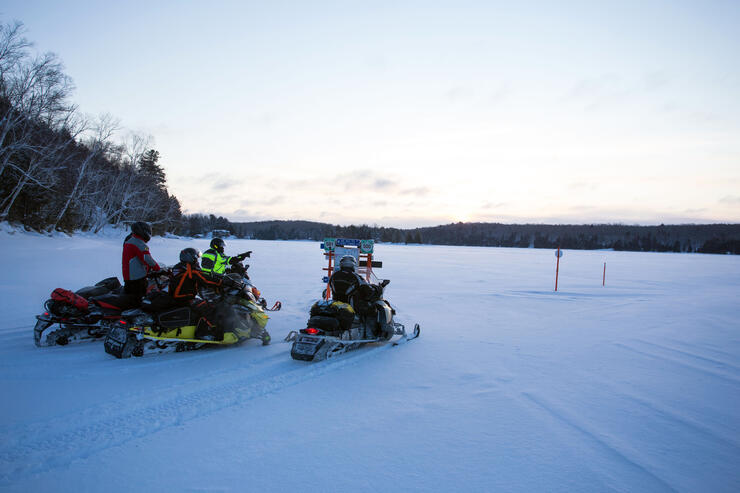
Hawkins advises that when snowmobiling on ice, “being overly prepared for the unexpected can make a world of a difference.” That means wearing a floatation-assisted snowmobile suit, which could make the difference in surviving an in-water situation. He adds that when traveling on lakes that are part of the OFSC trail system, snowmobilers should be sure to stay in close proximity to the staked markers.
“Clubs will monitor ice conditions and thickness throughout the riding season,” says Hawkins. “The OFSC trail guide will let you know which ice crossings are deemed safe for travel, or you can contact the local club for information.”
“I'm always a little apprehensive when on ice, there can be weak spots or pressure cracks,” adds Erb. “Never 100% trust ice. I have never been in a bad situation, so I can't really attest to this. I'd like to say I've always been prepared.”
Remember That Appearances Can Be Deceiving
Martin Lortz, an outdoor adventure photographer who learned to ride a snowmobile to aid in his photography (“My sledding experience went from zero to 4,300 km in 21 days!”) emphasizes that “the beautiful ribbon of groomed snow is not always as it appears.”
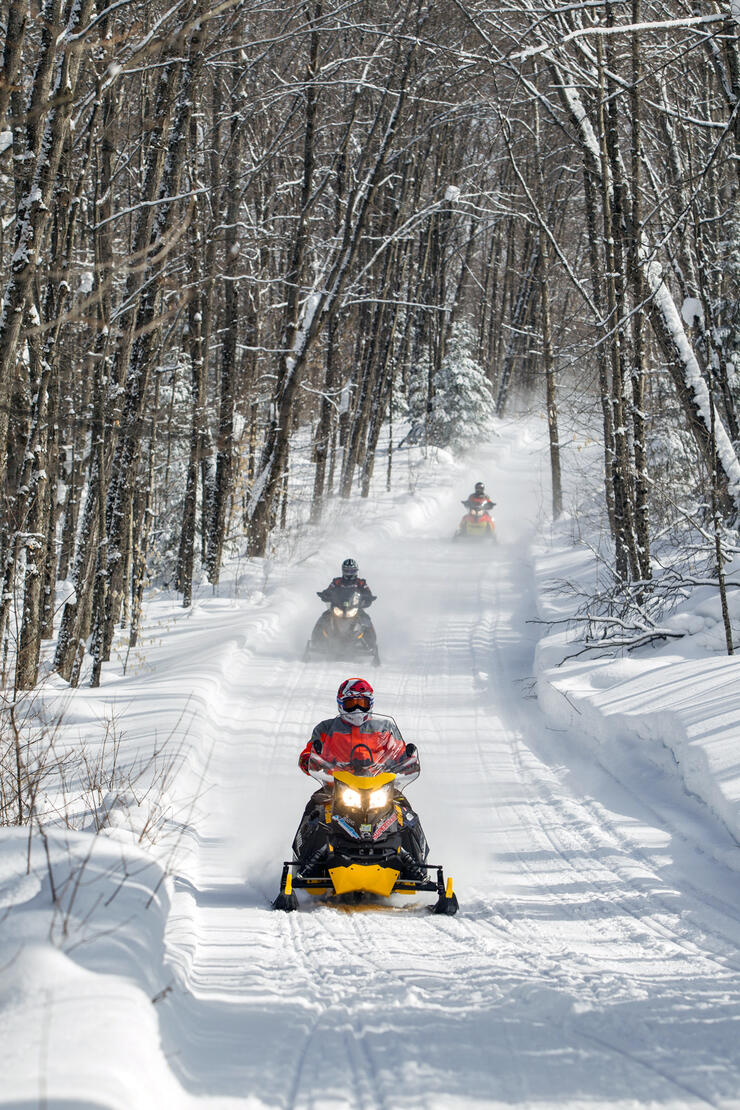
He points out that early in the morning, despite its smooth, powdery appearance, the trail is often frozen solid, which can make both steering and getting traction difficult.
“By midday, it is sledding perfection, then as the temperature and sun dip for the night, the day’s activities are frozen into a chunky mess and ready for another pass of the groomer,” says Lortz. “So my advice would be: proceed with caution until you know what's beneath your sled.”
See more from Martin Lortz on Instagram and Facebook.
Practice safe sledding, and enjoy winter in Ontario
Safe sledding is every rider’s responsibility. Keeping safe, being prepared, and practicing good trail etiquette helps to keep everyone safe. Whether you’re an old hand or a novice sledder, it’s important for everyone of all abilities to take stock of these important safety tips before heading out on the trails. Keep safe, and have fun!
Recommended Articles
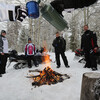
The Complete List of Snowmobile Events in Ontario 2025-2026
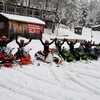
The Best Snowmobile-Friendly Lodges
Snowmobiling Winter Weather Forecast 2025-2026
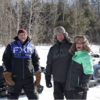
I Rode the Explorers Snow Tour in Ontario and Here’s What It Was Like
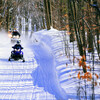
Why Ontario is One of the Best Snowmobile Destinations in the World
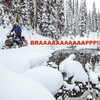
11 TikToks That Prove Ontario is the Best Place To Go Snowmobiling
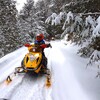
5 Weekend Snowmobile Getaways Near the GTA
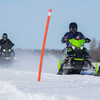
31 Ways To Get In The Know About Snowmobile Trail Riding in Ontario
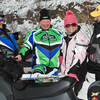
A Beginner's Guide to Snowmobile Lingo
